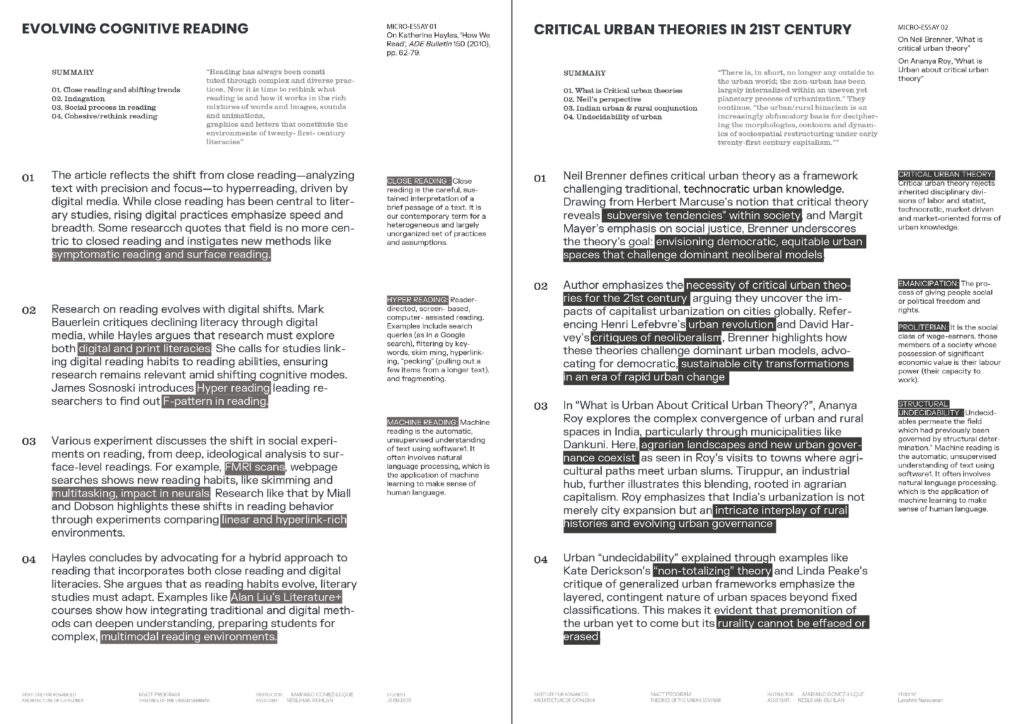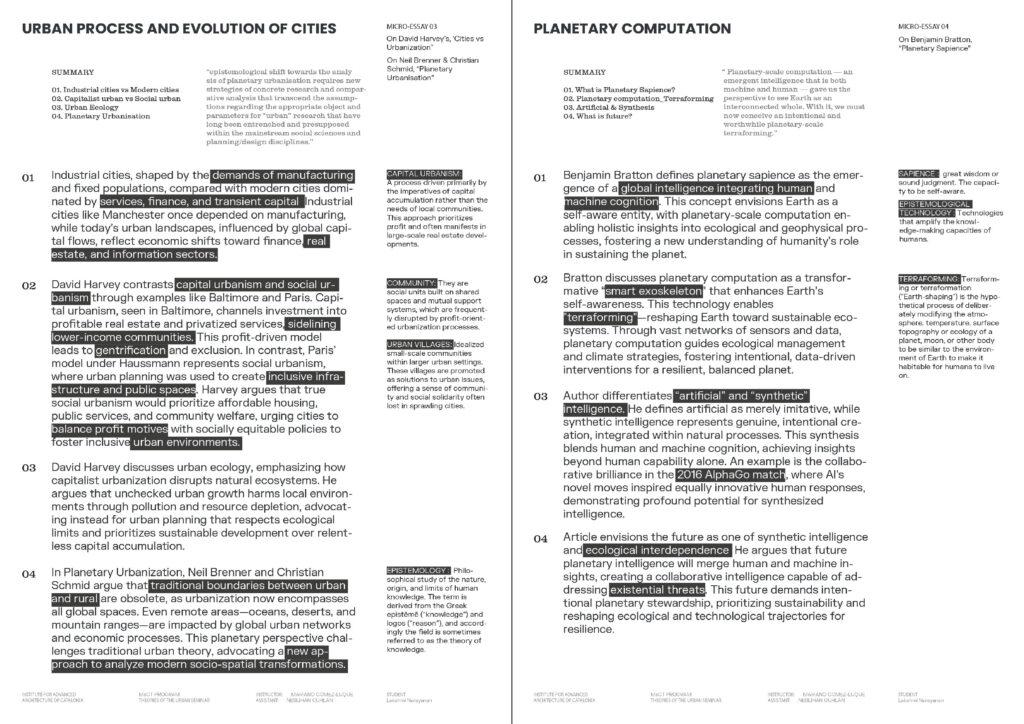This blog post reflects the lectures and exercises given by Professor Mariano Gomez-Luque, supported by readings from Katherine Hayles, Neil Brenner, David Harvey, and Benjamin Bratton. These texts provided a foundation for discussions on human cognition, social structures, ecological dynamics, and planetary computation. The lecture commenced with Katherine Hayles’ exploration of evolving reading practices, contrasting the meticulous textual focus of close reading with the screen-based, multitasking approach of hyper reading. Examples like Alan Liu’s Literature+ courses illustrated how integrating traditional and digital methods enriches comprehension. Concluding the first lecture, the introduction of hyper reading exercises and micro-essays for subsequent readings sparked enthusiasm.
Critical urban theories
The second lecture delved on the importance of critical urban theories as Neil Brenner defines, “Critical urban theory as a framework challenging traditional, technocratic urban knowledge”. Brenner addresses the challenging technocratic and market-driven urban models. Referencing Henri Lefebvre’s urban revolution and David Harvey’s critiques of neoliberalism, Brenner highlights how these theories challenge dominant urban models, advocating for democratic, sustainable city transformations in an era of rapid urban change. Indian urbanization, as discussed in Ananya Roy’s What is Urban About Critical Urban Theory?, provided vivid examples. The convergence of rural and urban in places like Dankuni and Tiruppur highlighted the blurred boundaries in rapidly transforming societies. Urban
“undecidability” explained through examples like Kate Derickson’s “non-totalizing” theory and Linda Peake’s critique of generalized urban frameworks emphasize the layered, contingent nature of urban spaces beyond fixed classifications. This makes it evident that rurality cannot be erased.

Planetary Urbanization
David Harvey’s comparison of industrial and modern cities marked the transition to understanding evolving urban forms. Industrial cities like Manchester, rooted in manufacturing, were juxtaposed with modern cities shaped by finance and transient capital. David Harvey contrasts capital urbanism and social urbanism through examples like Baltimore and Paris—spurred discussions on its consequences, including gentrification and ecological degradation, prioritizing public welfare.
In Planetary Urbanization, Neil Brenner and Christian Schmid argue that traditional boundaries between urban and rural are obsolete, as urbanization now encompasses all global spaces. This planetary perspective underscored the need for innovative approaches to socio-spatial transformations.

Computation – Theory
Benjamin Bratton’s vision of planetary sapience brought a futuristic dimension to the classroom discussions. He presented planetary-scale computation as a “smart exoskeleton” that enables Earth’s self-awareness. This concept linked human and machine cognition, fostering a collaborative intelligence capable of addressing existential threats. The idea of terraforming—a deliberate reshaping of Earth’s ecosystems—sparked lively debates. This idea explored how planetary computation could guide sustainable interventions, ensuring resilience and balance.
Conclusion
Hayles’ cognitive theories connected seamlessly with Bratton’s planetary sapience, emphasizing the integration of human and computational insights. Similarly,
Brenner’s critiques of urban frameworks paralleled Harvey’s calls for socially equitable cities. Also certain insights and references like movie “Minority report”, “Metropolis”, books like “Spaces of hope”, “Max’s Ecology” suggested to understand perspectives offered a comprehensive lens to reimagine urban and planetary futures.




